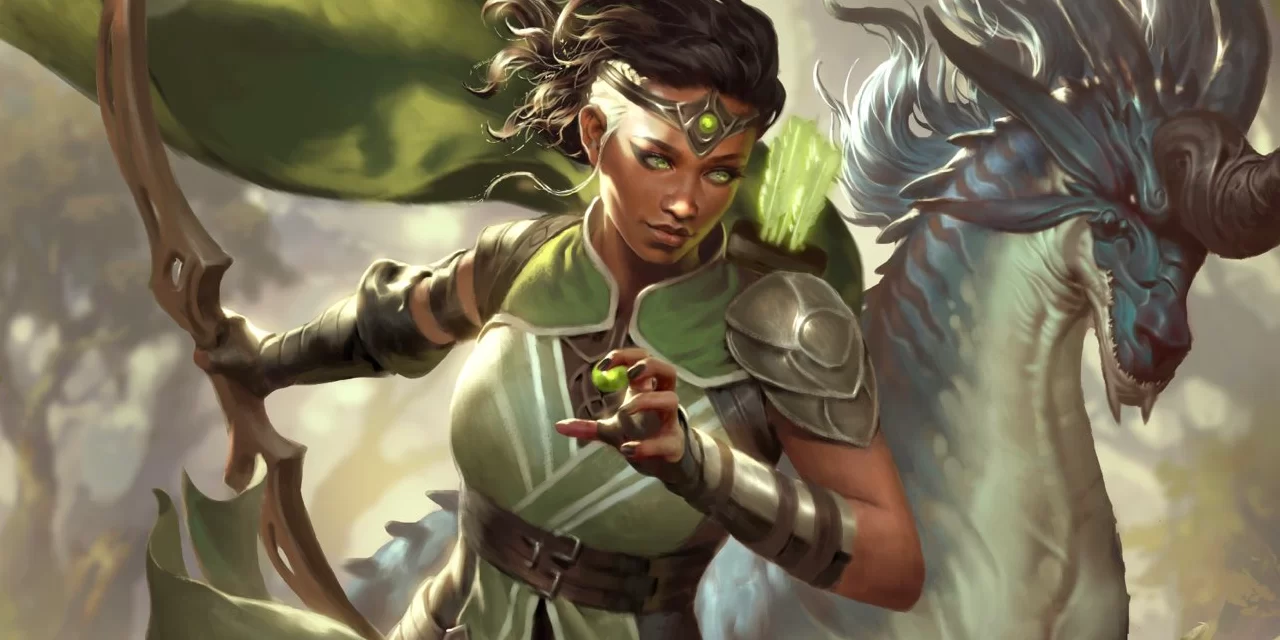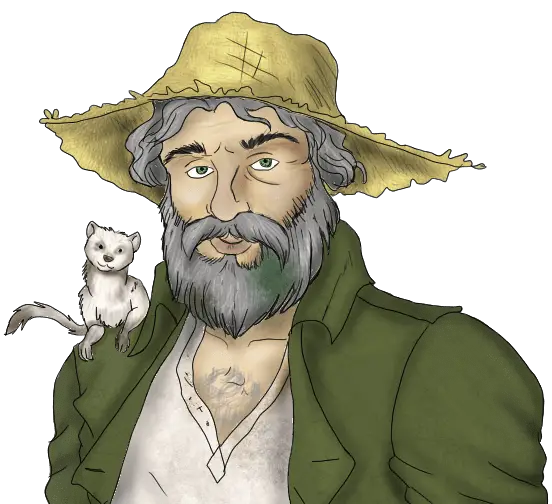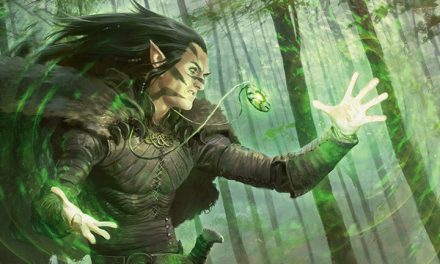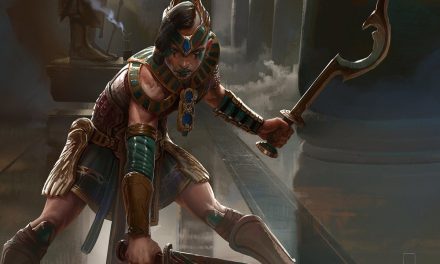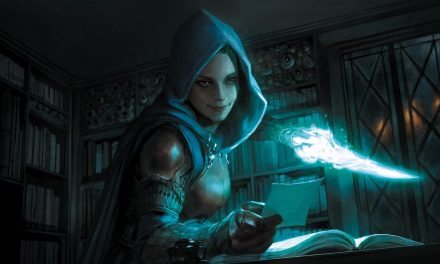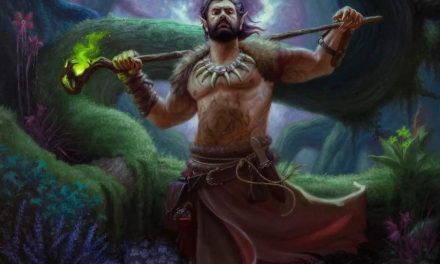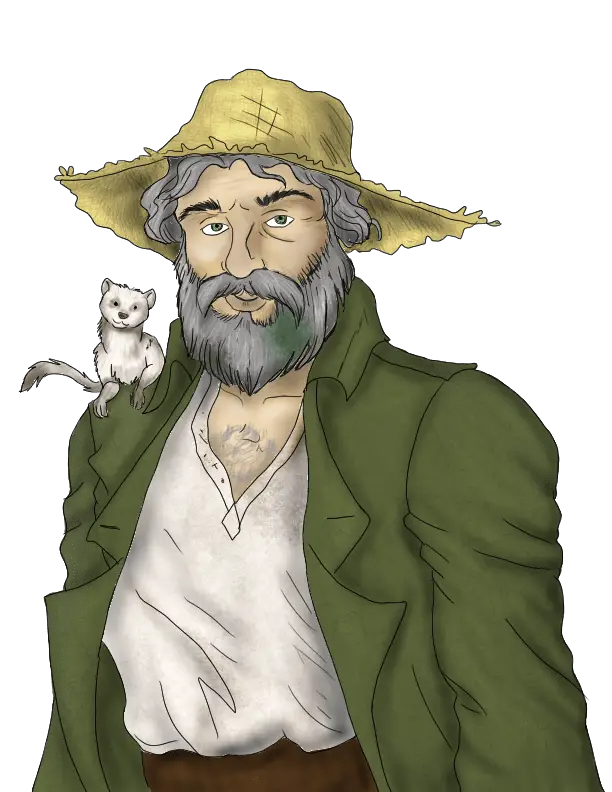The Drakewarden Ranger is deeply familiar with the power of dragons.
In fact, they are so keenly connected to that power that they are able to summon a draconic spirit to aid them on their adventure.
As you care for this drake companion, it will grow in size and power. Sure, it takes some patience but aren’t all great things worth waiting for?
Do you have what it takes to tame this draconic spirit?
Then this is for you!
This is the full guide to the Drakewarden Ranger in D&D 5e!
What is the Drakewarden Ranger in D&D 5e?
Whether by design or fate, the Drakewarden Ranger is imbued with the power of a mighty draconic spirit.
Calling upon this power, the spirit is able to take physical form as a loyal Drake Companion.
While it may be small in the early levels, it will continue to grow as the adventure goes on. Eventually, it serves not only as an ally in combat but also as a (flying) mount!
Your drake’s attacks are infused with the elemental power of your choice which allows them to deal extra damage and potentially exploit enemy weaknesses.
It’s hard to put it any other way: this subclass is seriously cool!
The Drakewarden Ranger appears in Fizban’s Treasury of Dragons alongside the Way of the Ascendant Dragon Monk.
Role in the Party
The most important thing that the Drakewarden Ranger brings to their party is their drake.
This drake is durable enough to have a strong impact on the frontlines in combat while also providing some additional support.
As the Drakewarden Ranger levels up, their drake gets bigger, can fly, and is able to function as a mount. Since your Drake companion gets tougher as you level up, it stays pretty “tanky” throughout the campaign.
Between the Drakewarden Ranger and their companion, you should have few problems playing strategically in combat.
However, don’t ignore how the scouting capabilities and extra utility that come with having a drake companion!
As far as “pets” go, yours is certainly one of the most versatile!
Related: Reviewing Fizban’s Treasury of Dragons for D&D 5e
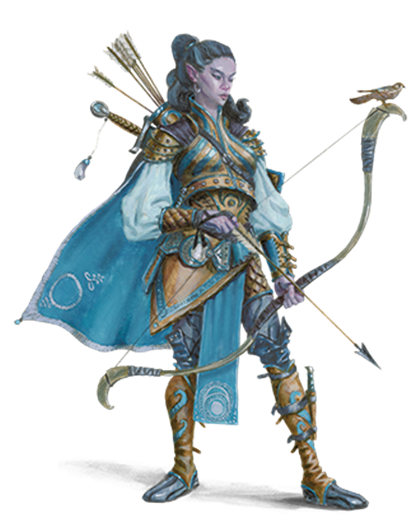
Drakewarden Ranger Features 5e
Your most impactful features are based around buffing your drake companion.
You want to make sure that you’re creating enough space for it to do what drakes do best. (As it just so happens, a large part of that involves eating faces. Who would have guessed?)
Because you’re juggling your Drakewarden Ranger and their drake companion, you’ll want to pay close attention to how you’re using your action economy.
If you take care of your drake and use its movement and features wisely, it will take excellent care of you in return!
Draconic Gift (Level 3)
Your first level 3 feature gives you a couple of fun benefits. Depending on your adventure, these might come in handy or just be flavor.
Thaumaturgy: You learn the thaumaturgy cantrip, which is a Ranger spell for you.
This is mostly flavor, but it’s a fun cantrip to have. You might find some fun and creative uses for it in your adventure.
Tongue of Dragons: You learn to speak, read, and write Draconic or one other language of your choice.
Rangers aren’t typically what comes to mind when it comes to the party’s “Face”, but extra languages never hurt.
Whether you’re interacting with dragons or finding ancient draconic texts, it’s a handy language to know. Especially considering that dragons are your whole thing.
Your Drake Companion speaks Draconic though, so at least you’ll never want for conversation!
Drake Companion (Level 3)
The Drakewarden Ranger’s core feature is Drake Companion. With this, you summon a draconic spirit that takes the form of a drake.
How the drake looks is entirely up to you.
As an action, you can magically summon the drake that is bound to you. It appears in an unoccupied space of your choice within 30 feet of you.
The drake is friendly to you and your companions, and it obeys your commands.
Whenever you summon the drake, choose a damage type listed in its Draconic Essence trait.
The Draconic Essence you choose determines what type of damage the drake is immune to and what kind of damage it deals with its Infused Strike feature.
Your Draconic Essence options are acid, cold, fire, lightning, and poison.
You Might Like: Hunter’s Mark in D&D 5e Explained
Drake Companion in Combat
Your Drake Companion is a solid choice as a pet. It’s durable enough to hold the line in combat and will keep improving as you level up.
Eventually, it will be able to fly and serve as a mount for you while also dealing additional damage!
But we’ll get to that in a moment…
For now, let’s go over the basics of using your drake in combat!
In combat, the drake shares your initiative count, but it takes its turn immediately after yours.
It can move and use its reaction on its own, but the only action it takes on its turn is the Dodge action, unless you take a bonus action on your turn to command it to take another action. That action can be one in its stat block or some other action.
If you are incapacitated, the drake can take any action of its choice, not just Dodge.
With a respectable Armor Class of 16 (which improves as you level up and your proficiency bonus increases) and 40 feet of movement, your Drake Companion isn’t the easiest thing to hit.
As I mentioned, just keep your bonus action open to give it commands!
The drake remains until it is reduced to 0 hit points, you use this feature to summon the drake again, or until you die. Anything the drake was wearing or carrying is left behind when the drake vanishes.
Once you summon the drake, you can’t do so again until you finish a long rest, unless you expend a spell slot of level 1 or higher to summon it.
The Drake Companion’s hit points are decent, but nothing mind-blowing. Still, being able to bring it back for the low cost of a spell slot is fantastic if you don’t have time for a long rest.
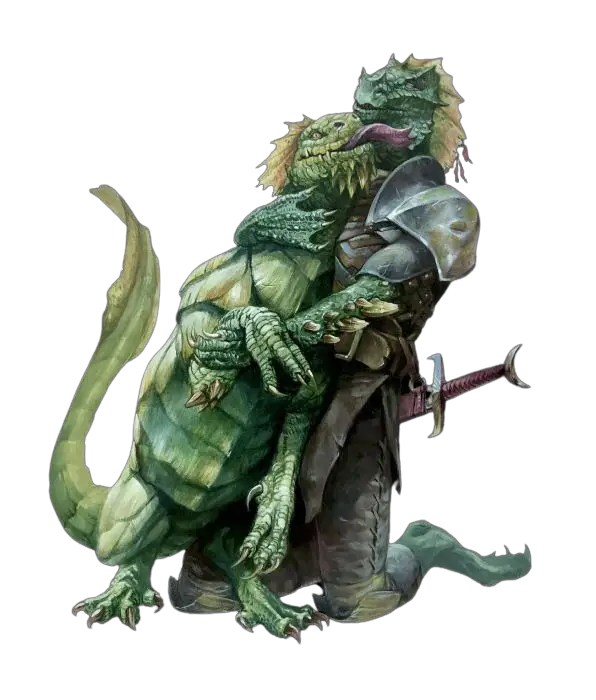
Bond of Fang and Scale (Level 7)
The Drakewarden Ranger’s level 7 feature comes with several great benefits. This is the point where you’ll start seeing it all come together as the subclass gains momentum!
There’s quite a bit here, so we’ll take it piece by piece.
When you summon your drake, it grows wings on its back and gains a flying speed equal to its walking speed.
They grow up so fast, don’t they?
One moment they can fit in your backpack and the next they’re spreading their wings and flying through the sky!
Speaking of growing up…
Drake Mount: The drake grows to Medium size. You can use the drake as a mount if your size is Medium or smaller. While you’re riding the drake, it can’t use the flying speed of this feature.
With 40 feet of movement, your Drake Companion is still a decent mount.
However, things are going to get a little weird if you’re trying to ride around in combat. After all, the drake’s turn is after yours.
I suppose you could get familiar with the Ready action to prime an attack or other action when your drake moves you into range, but that’s still a little clunky.
While your drake isn’t big enough to serve as a flying mount yet, the flying speed will greatly help otherwise. It’s some great utility to have both in and out of combat!
Magic Fang: The drake’s Bite attack deals an extra 1d6 damage of the type chosen for the drake’s Draconic Essence.
Extra damage is always nice, but there is a bit of a curious aspect to this feature.
Namely, the drake’s attacks are not magical which means that enemies that have resistance/immunity to nonmagical damage will be problematic.
The extra elemental damage will do the trick, but the bite itself won’t. It’s not horrible, but it is something you’ll want to be aware of!
Resistance: You gain resistance to the damage type chosen for the drake’s Draconic Essence.
What’s not to like about gaining resistance? Taking half damage of the type you chose for your drake’s Draconic Essence is great!
If you ever find yourself needing to switch up your resistance, don’t be afraid to re-summon your drake. It’s a great trade for the spell slot!
Drake’s Breath (Level 11)
Few things are as iconic as dragons’ breath weapons. Now you’ve got one for yourself!
Depending on what you’ve chosen for your drake’s Draconic Essence, you’ll be spewing acid, fire, frost, lightning, or poison all over your foes.
If you ever find yourself getting swarmed by enemies, they’ll be in for quite the surprise!
As an action, you exhale a 30-foot cone of damaging breath OR cause your drake to exhale it.
Choose acid, cold, fire, lightning, or poison damage. Your choice doesn’t have to match your drake’s Draconic Essence.
Each creature in the cone must make a Dexterity saving throw against your spell save DC. They take 8d6 damage on a failed save, or half as much damage on a successful one.
This damage increases to 10d6 when you reach level 15 in this class.
Once you use this feature, you can’t do so again until you finish a long rest, unless you expend a spell slot of level 3 or higher to use it again.
This deals some respectable damage and being able to either use it yourself or have your drake use it means you should have little trouble catching as many enemies as possible with it.
You obviously want to use this on a group of enemies if you can. That’s especially true if they aren’t particularly dexterous and DEFINITELY if the damage can exploit any vulnerabilities!
It does take your action, but there are far worse ways to use that.
After all, Rangers aren’t typically known for AoE spells, especially those that deal this kind of damage.
If you need this more than once a day, don’t be shy about burning a level 3 spell to use it again. If you can take out a decently-sized group of enemies, it will be well worth it!
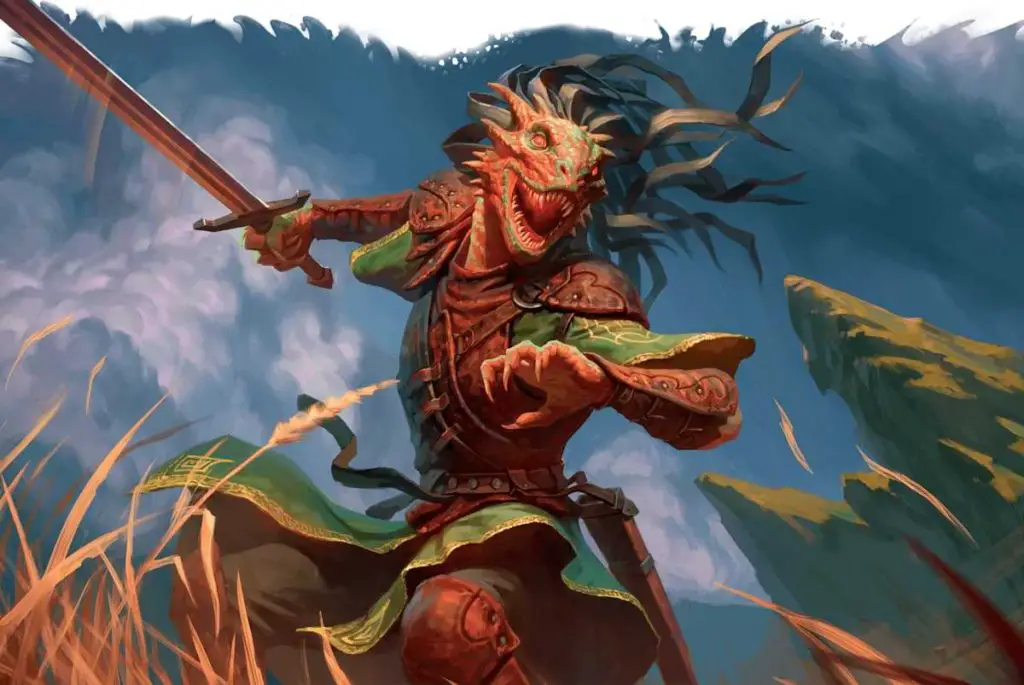
Perfected Bond (Level 15)
Hitting level 15, we come to the Drakewarden Ranger’s capstone feature.
At this point, the bond between your Ranger and your drake couldn’t be stronger! You’ve been through thick and thin together as you’ve watched your scaly friend grow in both size and strength.
Now, while your drake is summoned, you and the drake gain several benefits.
Empowered Bite: The drake’s Bite attack deals an extra 1d6 damage of the type chosen for its Draconic Essence (for a total of 2d6 extra damage).
More damage output is always nice.
At level 15 your drake’s bite will be doing 3d6+5 with this extra elemental damage. Once you hit level 17 and your proficiency bonus increases, it will be dealing 3d6+6.
Large Drake: The drake grows to Large size. When you ride your drake, it is no longer prohibited from using the flying speed of Bond of Fang and Scale.
Who’s a big drake? You are! Yes, you are!
Oh… *ahem*… sorry about that…
How about we take to the skies on our flying drake mount and never talk about that little outburst again, shall we?
But, in all seriousness, this is almost certainly the exact moment that you’ve been waiting for since you chose this subclass.
Flying around, mounted on your drake, and raining arrows down upon your foes or swooping in for some good old-fashioned melee combat…
Yeah, it’s as epic as it sounds!
Reflexive Resistance: When either you or the drake takes damage while you’re within 30 feet of each other, you can use your reaction to give yourself or the drake resistance to that instance of damage.
You can use this reaction a number of times equal to your proficiency bonus, and you regain all expended uses when you finish a long rest.
You’ve got several uses of this per long rest (5 at level 15 and 6 at level 17 and higher), so make sure you don’t forget about it.
That said, note that this takes your reaction so you can only use it once per round. If an enemy lands a high-damage attack on you or your drake, it’s worth the reaction to cut the damage in half.
Don’t waste it on every attack that hits you or your drake, but don’t ignore it either!
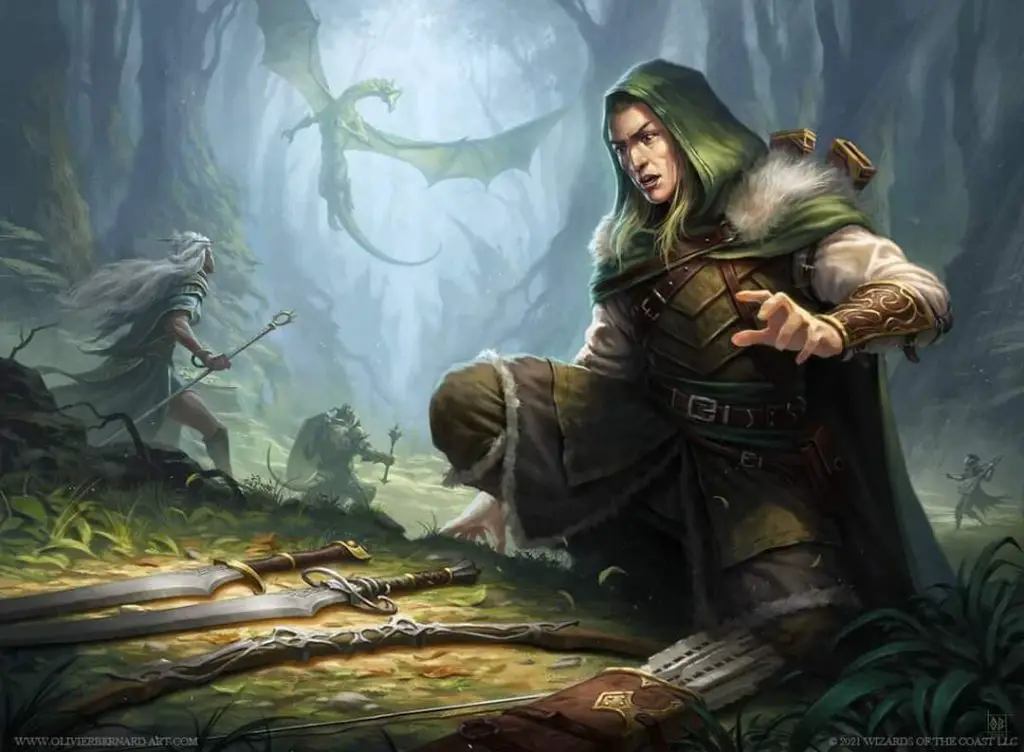
Connections
There are many ways that a Drakewarden Ranger might have bonded with their draconic spirit.
You might have received this power through a deep study of ancient draconic artifacts that still had lingering draconic magic on them.
Perhaps you have had visions and dreams related to some significant event involving dragons that has, for some reason, bonded you with your draconic spirit.
After all, draconic magic is famously powerful and often involves designs much grander than mere mortals!
But what if this was more intentional?
You might have been inducted into an order of Rangers who seek out, study, and preserve draconic lore. Perhaps you had to drink a small amount of dragon blood to gain your power and be officially inducted into that order?
As for connecting your Drakewarden Ranger to the adventure itself, the sky is the limit.
Draconic lore, magic, and artifacts can be found all over in some of the most far-reaching and dangerous areas of the world. That alone could prompt your character to join an adventure as a type of means to an end.
But even if there isn’t a large presence of dragons or dragon themes in the adventure, you’re still a Ranger. That means that you are an excellent guide with the skills and resourcefulness needed to safely guide your party on their journey!
Besides, what’s not to trust about a Ranger with a drake companion?
Is the Drakewarden Ranger Good?
All in all, the Drakewarden Ranger is a fantastic subclass option that brings incredibly fun visuals and useful mechanics to the table.
It takes it a little while to really get going, but it’s incredibly impactful once you start hitting the mid-levels! Of course, level 15 is when this subclass really pops off.
While most Rangers tend to be at their best in the early levels, the Drakewarden Ranger is one with great staying power that is especially ideal for longer campaigns.
But even beyond the mechanics, the Drakewarden Ranger scratches an itch that I didn’t realize I had.
I mean, how awesome is it to charge into battle with your trusty drake at your side? Or, better yet, as your faithful mount!
Comparisons between the Drakewarden and the Beast Master Ranger are inevitable, but I don’t think they step on each other’s toes as much as some might think.
Generally speaking, the Drakewarden Ranger lends itself towards a more combat-oriented playstyle, but the revised Beast Master brings a bit more variety to the table.
That doesn’t mean that you can’t build a Beast Master that puts out some crazy damage, but the Drakewarden is a bit more of a straightforward combat pick.
Either way, they’re both excellent subclasses!
Related: Ranking Every Ranger Subclass in D&D 5e!
Conclusion – Drakewarden Ranger in D&D 5e
The image of riding a dragon into battle against one’s enemies is something so deliciously epic that it alone might be reason enough to play a Drakewarden Ranger.
Rangers don’t typically get a lot of love in D&D 5e, though that has been improving lately.
If the Drakewarden is any indication of where the Ranger subclass options are going, I think the class will finally be getting its time to shine!
But anyways…
I hope you’ve found this guide to the Drakewarden Ranger in D&D 5e helpful!
Got questions or an awesome character concept you’d like to share? Let’s chat in the comments!
Don’t forget to sign up for the Tabletop Joab newsletter! It’s the best way to get all the latest player guides, DM Tips, news, reviews, and more for D&D 5e right to your inbox!
You can also follow me on Facebook and Twitter.
If you found this article helpful and want to support the site, you can buy me a coffee here! (It’s not expected, but very appreciated!)

